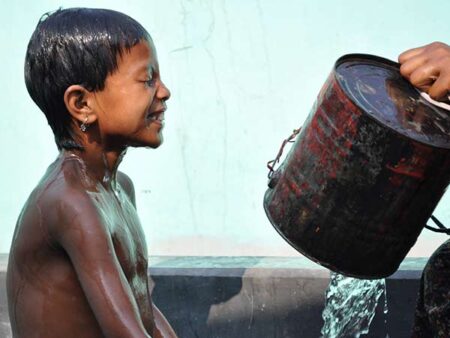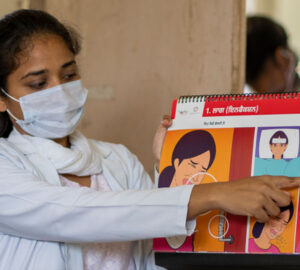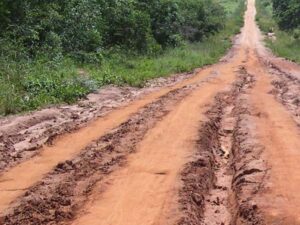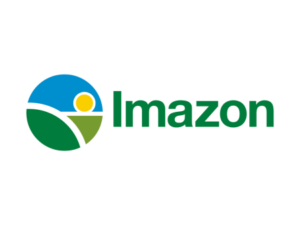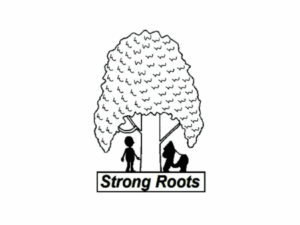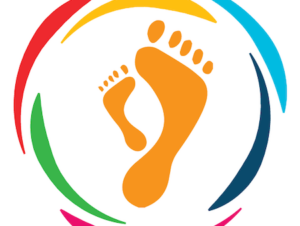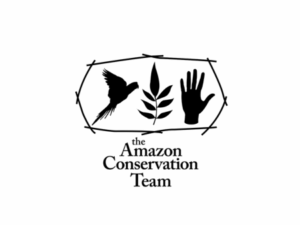Water.org and WaterEquity help people get funds to improve their water and sanitation systems.
Gary White of Water.org and WaterEquity spoke with Skyler Reid on March 6, 2023. Click here to read the full conversation with insights highlighted.
Skyler Reid: Could you start by introducing yourself and your organization, what do you do?
Gary White: I’m Gary White. I’m the CEO and Co-Founder of both Water.org and WaterEquity. Water.org focuses on helping people living in low and middle-income countries get access to the financial tools they need, so that they can improve their water and sanitation situation.
We believe that a lot of people around the world know what it takes to solve their water and sanitation poverty, if you will. What we do is help them connect to the financial resources primarily through microfinance institutions to help them get small loans, so that they can get the solutions that are best for them.
WaterEquity is an asset manager, and we raise capital in the capital markets, primarily the US and Europe, that provides us more funding to provide debt, and eventually equity investments, in partners around the world that then in turn provide some of those services to households that need improvements.
With WaterEquity, what we have is complimenting the philanthropic model of Water.org, an ability for people to invest in the social impact investors and earn a financial return on their investment while they’re also delivering social impact, which resonates well with a lot of donors and investors and corporate partners and other institutional investors who want to do good in the world while also doing well with their investments.
Skyler Reid: What is the root issue that you are addressing? And since it sounds like there might be both direct and indirect elements to your approach, can you talk a bit more about who you’re working with and how you’re responding to the issue?
Gary White: The root problem that we’re trying to address is that there’s still more than 700 million people around the world who don’t have access to improved water supply. More than a billion people around the world don’t have access to improved sanitation. And this is a burden in so many different ways.
Obviously, the health implications of drinking contaminated water, premature death is enormous. Not to mention the financial loss that people around the world suffer because they’re sick and can’t work at a paying job. The fact that the burden of walking miles every day to collect water almost always falls on the shoulders of women and girls, so they’re no longer in school, just the challenge or the human aspect of not having a toilet and the consequences that go along with that, particularly for women and girls having to defecate in the open. Sometimes, waiting until the cover of night to do that, and the safety issues that produces.
The underlying problem is water and sanitation, but it reverberates throughout all aspects of people’s lives and how they’re trying to improve them. At Water.org we started off with a purely philanthropic model decades ago where we were working with local communities to get wells drilled and springs developed and piped to people, which was fine. It helped a lot of people. But we also had the vision of everyone in the world having access to safe water and sanitation, and when you take a step back and look at the problem and what you’re doing to solve it and you can’t connect the dots, I think this is where the social entrepreneurial nature comes into play. It’s like, “Okay, we can bury our heads in the sand and just keep drilling more wells with more charity dollars, or we can try to understand how do we go about changing the system that keeps so many people without access to water and sanitation?” That’s where we struck upon this concept of water credit.
Water credit grew out of listening to people around the world, visiting with them in their homes, talking to them about how they’re solving their own water and sanitation crisis. It was made clear to us that they were already investing huge amounts of time and money to try to solve it on an ad hoc basis. What that means is that, they’re spending hours each day walking to collect water or waiting in line at public stand post that they could have been spent using that time for a paying job or going to school, or they were also paying water vendors in urban areas where there was no other choice to buy water off the backs of these trucks that wasn’t even of high quality and sometimes taking 25% of their income.
Talking to women around the world who were going to loan sharks paying 125% interest so that they could build a toilet. Combining the fact that our solutions weren’t meeting the scale of the problem and seeing a potential solution emerge, it’s like, “Well, what if we could get people access to small affordable loans, so that they could get the improvements that they wanted and actually capture some extra cash in the process?”
That’s when we decided that we didn’t want to become a bank ourselves and we said, “Who’s doing this right now?” Microfinance institutions around the world were lending to people who needed safe water and sanitation, but they weren’t lending to them for water and sanitation because it wasn’t seen as a classic micro loan of income generation. So, those loans weren’t being made. That’s where we stepped in and said, “Let’s nudge this system a little bit. Let’s de-risk water and sanitation lending for these MFIs so that they would start doing this.” And that’s what we did. It took a while to get it all off the ground and to make the right nudges, but you fast forward now, and about $4 billion in these small loans have taken place to poor households, and about 52 million people have gotten access to water and sanitation through this water credit mechanism. That’s $4 billion in charity we didn’t have to raise. If we tried to do all that with charity, we would be probably about 500 years into the future before we could have the same impact.
Skyler Reid: It sounds like working directly with microfinancing and the water credit idea are one part of the approach. Are there other things that make your approach distinctive from other people who are trying to tackle this issue?
Gary White: I think what makes Water.org distinctive beyond just water credit and in looking at how do you empower people financially was the second part of this and that is, when we started to talk to these partners around the world that were doing these loans, we asked them what’s keeping them from scaling up and doing this even more and faster? One of the consistent responses we got was, it’d be great if we had more consistent access to affordable financing, wholesale financing, so that we could do even more of these micro loans. That was a concept that resonated with us, how can we do that? That was happening about the same time that social impact investing was really starting to get a name for itself. This was back in 2015, 2016.
We asked the what if question, what if we could find investors in the US who would take a modest financial return if we could raise capital, and then lend it to these partners around the world? That was the start. That was an innovation that Matt Damon and I, my co-founder, came up with in the back of a Jeep in India where he said, “I’ll put in the first million dollars and we’ll see who else will throw in.” That created our first fund of about $11 million that we deployed. It worked. We’ve made the loans, they’ve gotten repaid, and investors got a modest financial return including a big social return in terms of lots of people getting water and sanitation.
We baked all that, incubated that, inside of Water.org. But then, we recognized this is a much bigger idea and we wanted to launch a full on asset manager, basically doing private equity funds that would allow us to scale this up. Water.org put about $11 million into that to get it launched. Now, WaterEquity is a fully up and running asset manager just like a Schwab or a Fidelity or anybody else in terms of the level of expertise and professionalism that we have to be able to raise even more capital. We have raised hundreds of millions of dollars in capital that is now out there working, getting millions of people access to water and sanitation and bumping up the financial returns for investors at the same time.
We’ve been able to work with foundation partners like the Skoll foundation and Capricorn as part of their network to use them as really great signal effects to other investors. Having Capricorn on board and having others on board helps us to go out to corporate partners that are using their balance sheets to invest in our funds with the idea that it provides them great ESG [Environmental, Social, and Governance], it provides them really powerful stories to tell about water stewardship around the world for their corporations. It really is a way to drive much more in terms of resources to the problem.
Skyler Reid: Could you briefly define what a water credit is?
Gary White: Water credit is about helping people living in poverty get access to the financial resources they need in order to solve their water and sanitation crisis at a household level. Traditionally, in the global water sector, virtually all NGOs have taken a philanthropy approach, raising philanthropy, and then using that as a charitable model of drilling wells or providing direct access to water and sanitation. Water credit is basically saying you can use some of that philanthropy to jumpstart systems change and spur these loans to people living in poverty, so that they can then get the solutions that are best for them.
It multiplies the philanthropy many times over because you’re not paying directly. What you’re doing is you’re catalyzing the markets to respond to people who are much better off even after they take out the loan and repay it. With water, an example of water credit is a woman who might be paying $30 a month for access to water from a water vendor, and she takes out a loan, so that she can pay a connection fee to the local utility. That loan repayment might be about $5 a month for her over a couple of years. But once she has that loan paid off, all she has to pay is her water tariff, which might be another $5 a month. Even with the loan payments and the water tariff, she’s still coming out ahead relative to paying that water vendor. That’s what makes the whole system work. It’s the value that’s created for her, or she can have an extra 10 bucks in her pocket or even more every month while she still has access to better water. The microfinance institution that extends that loan can get repaid with the interest it needs to run its business.
Skyler Reid: Do you have any other examples of the impact of the work?
Gary White: I think a good example of how water really reverberates at the human household level was a woman that I met in Uganda who, her name was Mama Florence and she was a grandmother. Before she got her water credit loan, she was spending hours a day on her bicycle cycling around trying to find water for her family and she used the loan to install a well and a simple pump at her house.
Now she had plenty of water. She had to pay a little bit for electricity to run the pump, but then she was able to grow more vegetables in her garden to feed her children and grandchildren. She was able to use some of the waste from that for pigs and then she also had this clay soil by her house so she started using the water to make bricks that she would sell. She also used the bricks to build some small rooms by her house that she is now renting out to people. This water just became a catalyst for her. You mix water together with an entrepreneurial spirit like hers, and you get incredible economic development for that family. Then you multiply that by 52 million people who have gotten access. It’s not just about the water, it’s about using water as a means to climb an economic ladder. That’s what we’re really trying to do, while at the same time, using philanthropy as efficiently as possible to set it all into motion.
Skyler Reid: How do you measure success for the project? What’s the evidence that this is succeeding?
Gary White: How I measure success is how much more we’re driving the capital markets between people who have the money and people who need it. That’s one aggregate way, if we look at how many hundreds of millions, and eventually, hopefully, even billions of investment is being driven towards this, that is one measure of success. What we also have to ensure is that, as that money comes into the financial system from the financial system and reaches a poor household, that it also does so equitably.
That’s the difference between a standard investment advisor like BlackRock and us. We do this by seeing the problem through the lens of the poor and making sure that as we basically create this financial plumbing between the capital markets and people living on a few dollars a day, that’s what we’re trying to do. We’re creating that financial plumbing to make that cash flow, but doing it in a way that makes sure that we’re looking at social impact metrics along the way. Whenever at water equity we look at an investment deal, we score it not just on its potential to provide a financial return that’s healthy, but also, what’s the demographic that that investment is going to serve? What’s the potential to create greater velocity for poor households for lending in that situation? We’re really trying to help everybody be better off and I think it works for water and sanitation in particular, relative to some other sectors because it literally can create value for somebody overnight.
If you think about a woman who is spending two hours a day scavenging for water, trying to find it somewhere or buying that water, and then the next day her tap is installed, then overnight, that’s value created for her. That’s savings created for her family. And the loan repayments are a fraction of what those savings are. With water, you have that potential to help people through access to finance where they can immediately monetize that, and then repay the loan. Other sectors, it’s more challenging. If you think about education, that economic payoff might not come for years when that girl who got the education finally starts to work or agriculture, it might take a whole growing season.
There’s not that immediate value creation. That’s one of the insights that we have in the water sector that would allow us to create water equity because it can be that immediate payoff for people. Paying interest on a loan is a very fair thing and also a value creating mechanism because we can put so much more capital out there than if we were just raising philanthropy.
Skyler Reid: What other insights or lessons have you learned that, if someone else wanted to replicate the kind of work you’re doing, you would recommend?
Gary White: For me, it’s always trying to look for unexpected insights from different directions or different sectors, different forces that you think might not be related to what you’re doing. But if you can harness them, they can amplify your work.
Before we had water credit, we were like a hundred other water NGOs saying poor people are just poor, and they need a charity solution. Discovering microfinance and how women were already using that for other things, it’s like, “Huh, how do you take a force that seems unrelated to lending and bend it towards your problem?” I think that was a key thing for anybody to look at that’s trying to create social change.
You have to get outside your own domain and see what else is happening around that you can then leverage for your problem. I think the same thing was true with impact investing. Nobody would’ve believed a few years ago that somebody could make a financial investment, get a reasonable financial return, and still help somebody making a few dollars a day get access to build a toilet. That would be almost unthinkable. Yet, when you look at that and you put it together with this value creation, then that’s just another example.
When we look at how we go about helping predominantly people living in poverty through social change, I think there’s value in trying to really understand how this problem affects them and how solving it creates value for them and how they monetize that value. If we come about this from a value creation perspective, I think anybody working in the social sector that’s trying to do this can get more insights in terms of how they tweak their programs or tweak their approach to understand value creation from the perspective of that person who’s living it versus having assumptions about why you want to go solve that problem or help that person solve that problem.
A lot of this work in the water sector happens where somebody comes in and works with the community and drills a well, it’s like we’re a well drilling charity. That’s what we do, without really understanding what they need, or if there is a different solution that if they had the resources, they would pick for themselves? Would it be that particular kind of well or would it be a whole different kind of solution?
You have a lot more supply driven efforts happening in this sector than you have demand driven things. It’s a fine line to walk between trying to think of it as a business opportunity versus a charitable opportunity. You don’t want to skew too far one way or the other. We don’t necessarily see the poor as a problem to be solved as much as a market to be served. If you can serve that market in an equitable way where everybody can win, then I think you’re going to get much further along in systems change, in solving some of the big problems.
Skyler Reid: Is there anything you’ve done that you found didn’t work?
Gary White: Yeah, there are lots of wrong ways to do something and only a few right ways. We tried to be the bank more than relying on a network of others and we definitely had some failures upfront with some of our work in Kenya, for instance, where we were lending directly to one of our partners that were then lending to communities.
It’s hard to turn an NGO into a microfinance institution, is what we learned. It was just a different mindset about how you work with communities. What we recognized was those loans got paid back, I think about 50 cents on the dollar, which no investor’s going to tolerate, so we pulled back from that model and said, “We really need to learn from microfinance institutions and even bigger financial institutions about how to make this work.” That was a big aha for us and it is a lot more about collaborating with those institutions that are already there than trying to start something from scratch.
Skyler Reid: There’s always issues, especially at first around things like raising finance, but are there other issues that you are still working to overcome or still figuring out how to manage?
Gary White: One of the challenges I see right now for us, and probably for lots of social entrepreneurs is, how the funding is derived. The whole concept of restricted versus unrestricted funding is a real challenge. What we see from an operational perspective is it starts to become very inefficient if you’ve got 50 different donors each giving you a restricted grant to achieve a specific thing, in a specific country or a specific part of a country, or they want to do a specific type of approach or they want to use specific technologies because they all come at it from different perspectives.
It gets to be incredibly inefficient in terms of your systems and your processes, which is something that we’ve experienced. We are really good at figuring out how to equitably get water and sanitation to people living in poverty. We’re pretty good about innovating the concept of water credit, the concept of launching WaterEquity. We would never have been able to do that if we didn’t have unrestricted funding. No donor was going to say, “Oh, you’re going to now help people around the world that are poor, get loans for toilets? I don’t think that’s going to work.” It’s like, “Well, we think it will work, and here’s why.” Or you’re an NGO, “You want to create a global asset manager like Charles Schwab or Fidelity, we’re not going to pay for that.” It squashes any opportunity for real innovation and unless we had the ability to raise some of those unrestricted dollars to invest in that, which was really hard to do, then we would’ve never unleashed the kind of innovations that we have.
For me, that is one of the biggest challenges of philanthropy today, trusting the people that are experts and taking a chance or looking at their track record and saying, “No, this really isn’t that risky. If I just let loose a few more million dollars, these folks are going to turn that into maybe billions.” That’s the challenge that we’re trying to overcome and we’ve been pushing for this with members of the giving pledge and others that they really look at it in a fundamentally different way. We want to be accountable at a macro level, at least. We can be accountable in terms of the extra billions of dollars in capital that we’re mobilizing for the problem. That’s very real and concrete and objective, how many people are we reaching. It’s really hard to be that efficient with it if people are micromanaging which country, which type of project, et cetera.
One of the things that has been an added bonus has been working with local and national governments in different countries. India is a great example of where they had an initiative called Swachh Bharat that was designed to get everybody in India access to a toilet. We worked with them on that program because they were seeing the success of water credit. To them it’s like, “Wow, if we can catalyze financing for people to build toilets, the government won’t have to put in nearly as many resources.” In fact, they didn’t have the resources to build everybody a toilet. That was a really good parallel effort that we were able to leverage and work with them to get access to financing.
The governments in these countries don’t necessarily have the resources to solve this on their own. Yet, they are very committed to getting their people water and sanitation. Governments usually aren’t going to be the early adopters or the innovators themselves, but they’re pretty good at recognizing when there are solutions that are proven, that work and that they can help scale up. We see other countries looking at India’s model and looking at Bangladesh and saying, “Can we do this there?” We’re working in Bangladesh also, so we can collaborate with them as other countries look at getting access to universal water and sanitation.
Skyler Reid: How are you addressing system level change in your field?
Gary White: All these problems the social entrepreneurs are working on are pretty complex. At our core, we’re about removing the financial barriers between people and safe water and sanitation. Every time you remove one barrier, you find that there’s another one behind it. That’s what we’re trying to get at from a system change perspective, what are all of those barriers that are in place? There’s two different systems that work here. There is a philanthropically driven system in the world that has a purpose to try to correct the failures in our social systems or in our market systems.
The system of markets and capitalism is well-entrenched, it has tremendous power, and that’s how we live. There’s this philanthropic system that’s out there that is designed to try to overcome some of the inadequacies that are in the capitalist system. As a social entrepreneur, you’re operating at the intersection of those things. You’re trying to take the best pieces of each of those and put them together in a way that you can have much greater impact and scale if you bring in the market system and overlay it with the philanthropic system.
To me, that’s where the greatest systems change can happen. It’s not always easy to figure out how that market element may intersect with what you’re doing in the social, in the philanthropic sector, but I believe that’s where we really have to stretch as social entrepreneurs, and not be afraid to participate in the market system. To, again, bend it towards the poor in an equitable way. When I think about systems change, I want to be operating that intersection and distinguishing us from a private company because we always hold that lens of seeing it from the perspective of the poor, making sure that they are not taken advantage of, but actually are served by that intersection.
Skyler Reid: What do you think is most needed from other actors and partners to advance systems level change in this field?
Gary White: I don’t think that what we’re doing in the model of water credit and even WaterEquity is in and of itself going to solve this problem. It’s too big. But what it can do is a couple of things. One, it can serve as a signal effect to other capital providers, other investors like, here is an asset manager that has proven that you can provide an attractive financial return while also solving one of humanity’s greatest challenges. If we can be that signal effect, so that it attracts others to start asset managers or to develop portfolios that are focused on things like water and sanitation in these markets, then that’s one thing that we can do because we’re never going to be a fund that has the trillion dollars that’s needed to solve the problem.
The other thing that we can do with this is, as governments see the power of bottom up financing in their countries and help catalyze getting the capital to people so that they can get the solutions that are best for them, it lifts a little bit of the burden off of their shoulders trying to provide water for free for everyone. If you can segment the market and you can say, “Okay, not all 700 million people are going to be able to afford a loan, but if you can serve a half or three-fourths of those with the capital markets,” that really creates a lot more opportunity for governments to allocate the resources that they do have to those that are not able to participate in this way.
I don’t see this as a one-size fits all solution or a panacea for the whole crisis, but the complexity of the system, it can work to our advantage here because you can segment the market so that more resources that don’t need to go to subsidies can go to those who need it the most.
Skyler Reid: How do you see your work and all these programs changing over the next five years?
Gary White: It’s interesting because oftentimes, you think you’re going in a direction and you strike out in something new and five years later, it probably doesn’t look like what you thought it was going to, but because you went through the process, it’s probably even bigger and more powerful. I like one-year plans as opposed to five years, so we can know what the metrics are. We want to drive the numbers up. We want to drive up the amount of capital that’s coming into the system, both philanthropically and from an impact investing perspective. We want to model how you can create that financial plumbing to make sure it reaches the poor households and we want to invite others to join us.
To me, it’s as much about amplifying the story using these five years to point to where we’ve succeeded and where others might want to come in. And continue to catalog our failures as those happen as well. It’s being open for what might be the next big idea, what’s the next water credit, what’s the next water equity, while at the same time running up the numbers on the current problem and getting water and sanitation to as many people as possible during that time.
Click here to read the full conversation with insights highlighted.
Skyler Reid is a multimedia producer and journalist living in New York City. He’s worked on award-winning projects both nationally and internationally, and has produced photo, video and text features for publications including The Washington Post, The Guardian, VICE, NBC News and others. He’s covered breaking news and features for wire services including Reuters, the Associated Press and Agence France-Presse. Much of his work focuses on urban development and communities, but occasionally delves into Satanic crime, pot churches, and pro wrestling. He takes too many photos of his dog, Bowie, and is obsessed with karaoke.
* This interview has been edited and condensed.
Learn about other social change organizations working with water.

